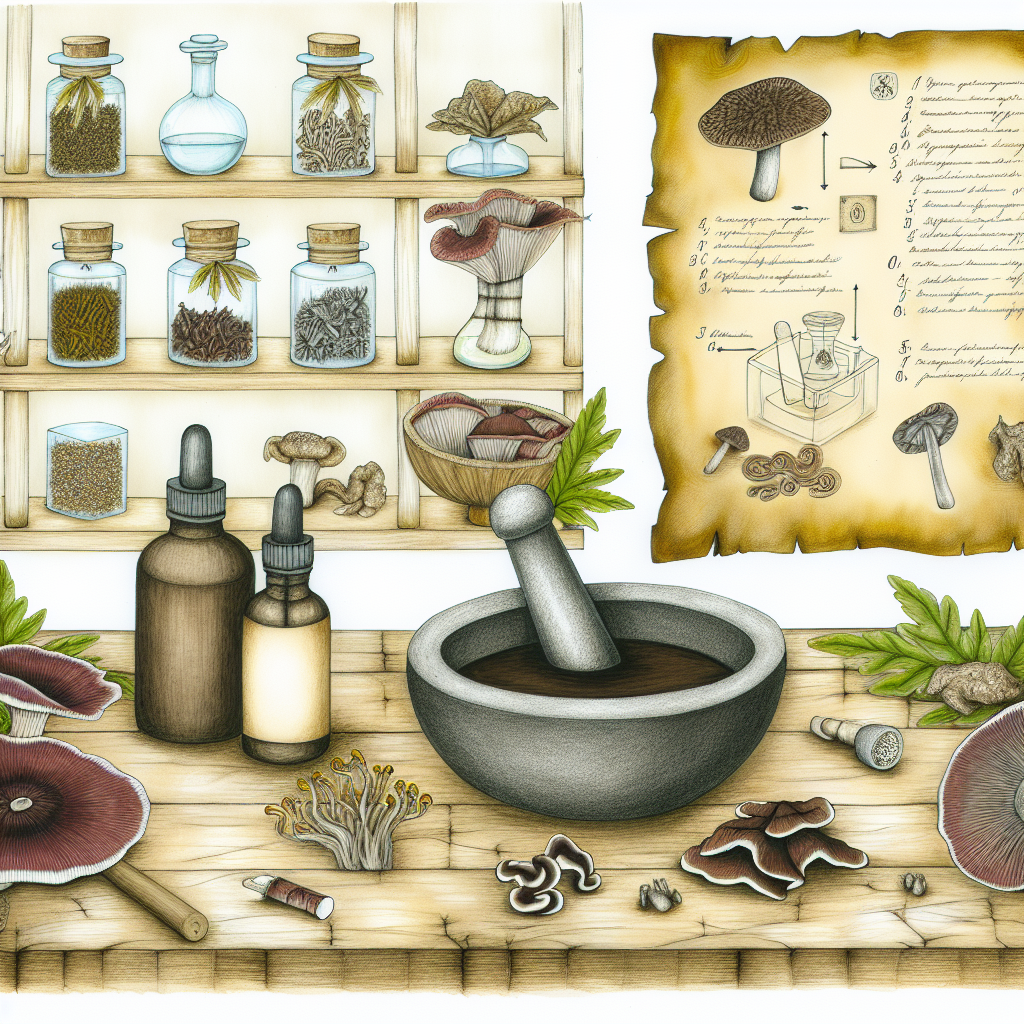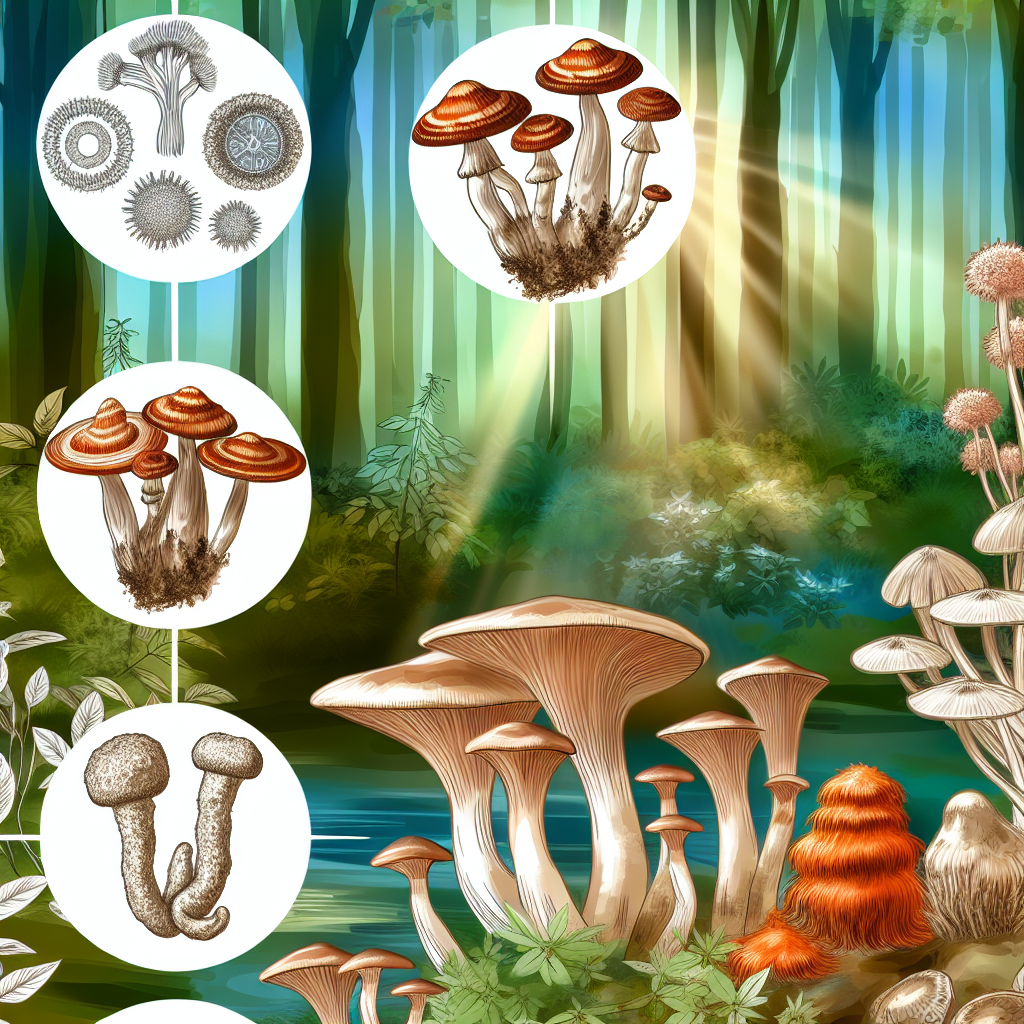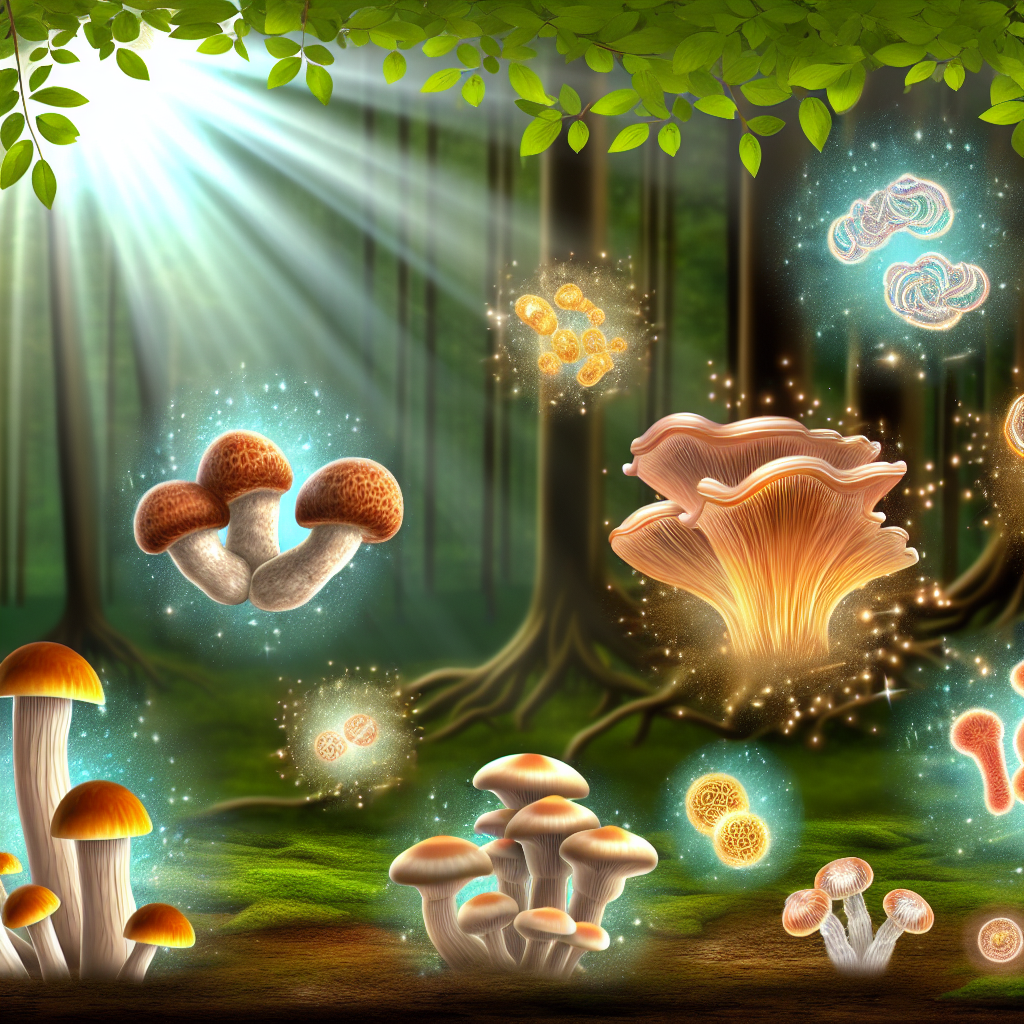Medicinal Mushroom Tinctures: Step-by-Step Preparation Guide
Unlocking Ancient Wisdom: Why Medicinal Mushroom Tinctures Are Making a Comeback
In recent years, medicinal mushrooms have made a powerful resurgence in the wellness world, gaining deserved recognition for their wealth of health benefits. From immune support to cognitive enhancement, these natural fungi are being used in both traditional and modern healing systems.
One of the most effective and accessible ways to consume and preserve the therapeutic constituents of these fungi is through tinctures. Medicinal mushroom tinctures are concentrated liquid extracts that allow your body to efficiently absorb the active compounds of the mushrooms, especially those not easily bioavailable through digestion alone.
Popular medicinal mushrooms like Reishi (Ganoderma lucidum), Lion’s Mane (Hericium erinaceus), Chaga (Inonotus obliquus), and Turkey Tail (Trametes versicolor) have potent bioactive compounds such as beta-glucans, terpenoids, and polysaccharides. These compounds support immune health, reduce inflammation, boost nerve growth, and may even inhibit the growth of certain cancer cells.
However, these benefits are most effectively accessed when the mushrooms undergo a dual-extraction process that unlocks both the water-soluble and alcohol-soluble constituents—exactly what a well-prepared tincture offers.
As public interest and scientific validation grow, more people are embracing the DIY method. Making mushroom tinctures at home is a deeply empowering, cost-effective, and customizable wellness practice.
This guide will walk you through the step-by-step dual extraction process, safety tips, sourcing practices, dosage, and storage recommendations—so you can confidently create your own potent medicinal mushroom tincture.
Backed by Science: The Clinical Benefits of Medicinal Mushroom Tinctures
Medicinal mushrooms are gaining traction in integrative medicine, supported by a growing number of peer-reviewed studies. Researchers have confirmed the impressive range of therapeutic actions found in mushrooms commonly used in tinctures.
Reishi (Ganoderma lucidum)
Known as the “mushroom of immortality,” Reishi is rich in polysaccharides and triterpenoids. A study in *Phytochemistry* found that Reishi enhances white blood cell and natural killer (NK) cell activity, vital to immune system health ([Li et al., 2003](https://www.sciencedirect.com/science/article/abs/pii/S003194220200456X)).
Lion’s Mane (Hericium erinaceus)
Praised for its nootropic benefits, Lion’s Mane has been shown to stimulate the synthesis of Nerve Growth Factor (NGF), supporting neuron health and cognitive function. This makes it promising for neurodegenerative conditions like Alzheimer’s disease ([Zhang et al., 2016](https://www.ncbi.nlm.nih.gov/pmc/articles/PMC5322081/)).
Chaga (Inonotus obliquus)
Recognized for powerful antioxidant properties, Chaga contains betulinic acid and superoxide dismutase (SOD), which combat DNA damage and chronic inflammation ([Park et al., 2005](https://pubmed.ncbi.nlm.nih.gov/15802800/)).
Why Tinctures Work So Well
The dual-extraction method is scientifically validated. Water extracts immune-supportive beta-glucans, while alcohol pulls out triterpenes and other powerful non-polar compounds. This ensures your tincture delivers the mushroom’s full spectrum of therapeutic benefits.
DIY Tincturing Made Simple: The Dual Extraction Method Step-by-Step
Ready to make your own powerful mushroom extract? Follow this step-by-step guide to ensure a potent and shelf-stable tincture.
1. Choose Your Mushrooms
Select dried, organic medicinal mushrooms—Reishi, Chaga, Lion’s Mane, or a combination. Source from trusted suppliers to ensure quality and purity.
2. Preparation and Grinding
Break down your dried mushrooms into small chunks or grind them into a coarse powder using a coffee grinder or blender. Increasing the surface area enhances extraction efficiency.
3. First Extraction – Alcohol Phase
Place the mushroom material in a clean glass jar. Add 80–100 proof ethanol (vodka works great) using a 1:5 ratio (1 gram of dried mushroom to 5 mL of alcohol). Seal the jar and let it steep for 4–6 weeks, shaking it daily.
4. Strain the Alcohol Extract
After steeping, strain the mixture through a cheesecloth or fine sieve. Set aside the liquid—this is your alcohol-based extract.
5. Second Extraction – Hot Water Decoction
Take the remaining mushroom solids and simmer them in water for 3–4 hours, using about 3 times as much water as you used in the alcohol phase. Use low heat to prevent compound degradation.
6. Combine and Bottle
Once cooled, strain the water extract. Mix it with your alcohol extract in proportions that result in 25–30% alcohol content to preserve the tincture. Funnel into labeled amber glass dropper bottles to protect from light and oxidation.
7. Store It Right
Keep your tincture bottles in a cool, dark place. Typical dosage is 1–2 droppers (around 1–2 mL) daily, taken sublingually or in tea. Consult a healthcare professional for personalized usage guidance.
From Forest to Pharmacy: Why Making Your Own Tinctures Is Worth It
Medicinal mushroom tinctures are more than a natural remedy—they’re a fusion of ancient tradition and cutting-edge science. By learning to harness the power of dual extraction, you unlock the full healing potential of fungi that have supported human health for centuries.
Whether you’re looking to boost your immune resilience, support cognitive clarity, or protect against oxidative stress, tinctures offer a powerful, bioavailable form of these intelligent healing organisms. Homemade formulations give you complete control over sourcing, potency, and purity—making them a smart, sustainable addition to your wellness toolkit.
Now that you’ve learned the method, it’s time to begin your journey into the world of DIY herbal medicine. Here’s to your health—rooted in nature, crafted by hand.
References
– Li, Y. Q., & Wang, S. F. (2003). Anti-hepatitis effect of Ganoderma lucidum polysaccharide in mice. *Phytochemistry*. [Link](https://www.sciencedirect.com/science/article/abs/pii/S003194220200456X)
– Zhang, Z., Lv, G., Pan, H., Pandey, A., He, W. (2016). Hericenones and erinacines: stimulators of nerve growth factor (NGF) biosynthesis in Hericium erinaceus. *International Journal of Molecular Sciences*. [Link](https://www.ncbi.nlm.nih.gov/pmc/articles/PMC5322081/)
– Park, Y. K., Kim, D. S., et al. (2005). Antioxidant activity of Inonotus obliquus. *Biological & Pharmaceutical Bulletin*. [Link](https://pubmed.ncbi.nlm.nih.gov/15802800/)
Summary:
Medicinal mushroom tinctures are a powerful and bioavailable way to consume the therapeutic compounds found in fungi like Reishi, Lion’s Mane, and Chaga. The dual extraction method unlocks both water-soluble and alcohol-soluble constituents, delivering the full spectrum of benefits. This guide provides a step-by-step process for making your own high-quality tinctures at home, allowing you to tailor the formulation to your needs. Medicinal mushroom tinctures are an ancient remedy with modern scientific backing, offering a sustainable and empowering addition to your wellness routine.

Dominic E. is a passionate filmmaker navigating the exciting intersection of art and science. By day, he delves into the complexities of the human body as a full-time medical writer, meticulously translating intricate medical concepts into accessible and engaging narratives. By night, he explores the boundless realm of cinematic storytelling, crafting narratives that evoke emotion and challenge perspectives. Film Student and Full-time Medical Writer for ContentVendor.com




